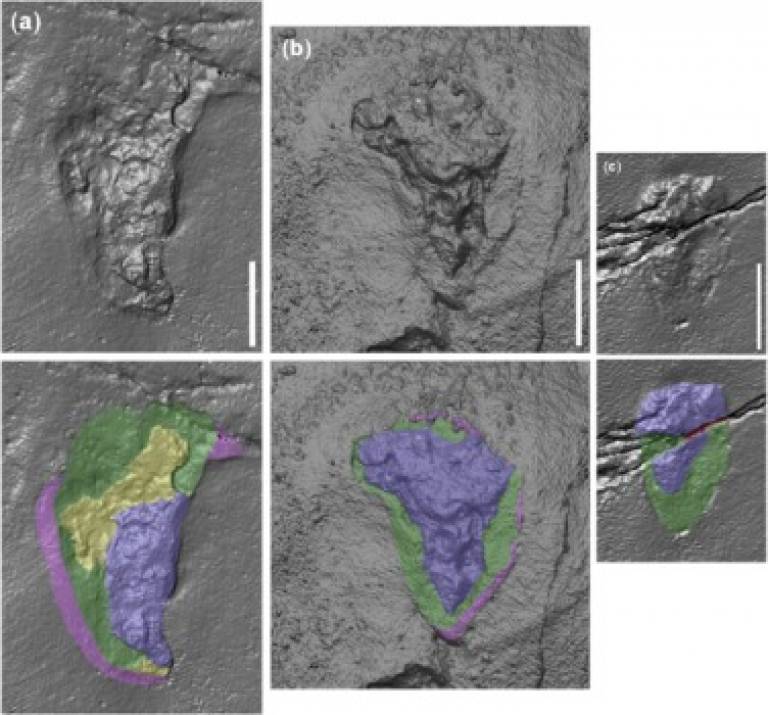The fossilised Miocene hominin footprints of Crete may not actually be footprints
6 November 2018
Gierlinski et al.
 (2017) report on what they interpret to be Miocene hominin footprints near the seaside village of Trachilos in western Crete. We review the case made by the authors that these ichnites represent bona-fide footprints, and their conclusion that they were made by bipedal hominins. Gierlinski et al.'s study demonstrates a number of problems with data presentation, e.g. a) substrates corresponding to measured prints are not clearly specified, b) no explanation is given for how prints were identified when the authors' own criteria for print identification were not met, c) no consistent morphological detail among prints is provided that could identify them as originating from the same or a similar agent, or one with bilateral symmetry, d) alternative agents that could have produced the prints are not explored, e) no explanation is given as to how their multivariate analyses of print outlines deals with missing data and why it uses non-homologous landmarks, etc. The evidence they present, therefore, is insufficient to support their arguments and conclusions. We remain unconvinced the ichnites are bona-fide footprints, let alone hominin footprints, but discuss some of the criteria employed for distinguishing and recognizing an early hominin footprint.
(2017) report on what they interpret to be Miocene hominin footprints near the seaside village of Trachilos in western Crete. We review the case made by the authors that these ichnites represent bona-fide footprints, and their conclusion that they were made by bipedal hominins. Gierlinski et al.'s study demonstrates a number of problems with data presentation, e.g. a) substrates corresponding to measured prints are not clearly specified, b) no explanation is given for how prints were identified when the authors' own criteria for print identification were not met, c) no consistent morphological detail among prints is provided that could identify them as originating from the same or a similar agent, or one with bilateral symmetry, d) alternative agents that could have produced the prints are not explored, e) no explanation is given as to how their multivariate analyses of print outlines deals with missing data and why it uses non-homologous landmarks, etc. The evidence they present, therefore, is insufficient to support their arguments and conclusions. We remain unconvinced the ichnites are bona-fide footprints, let alone hominin footprints, but discuss some of the criteria employed for distinguishing and recognizing an early hominin footprint.
Comments on possible Miocene hominin footprints
Jeff Meldrum, Esteban Sarmiento
DOI: 10.1016/j.pgeola.2018.05.006
 Close
Close

